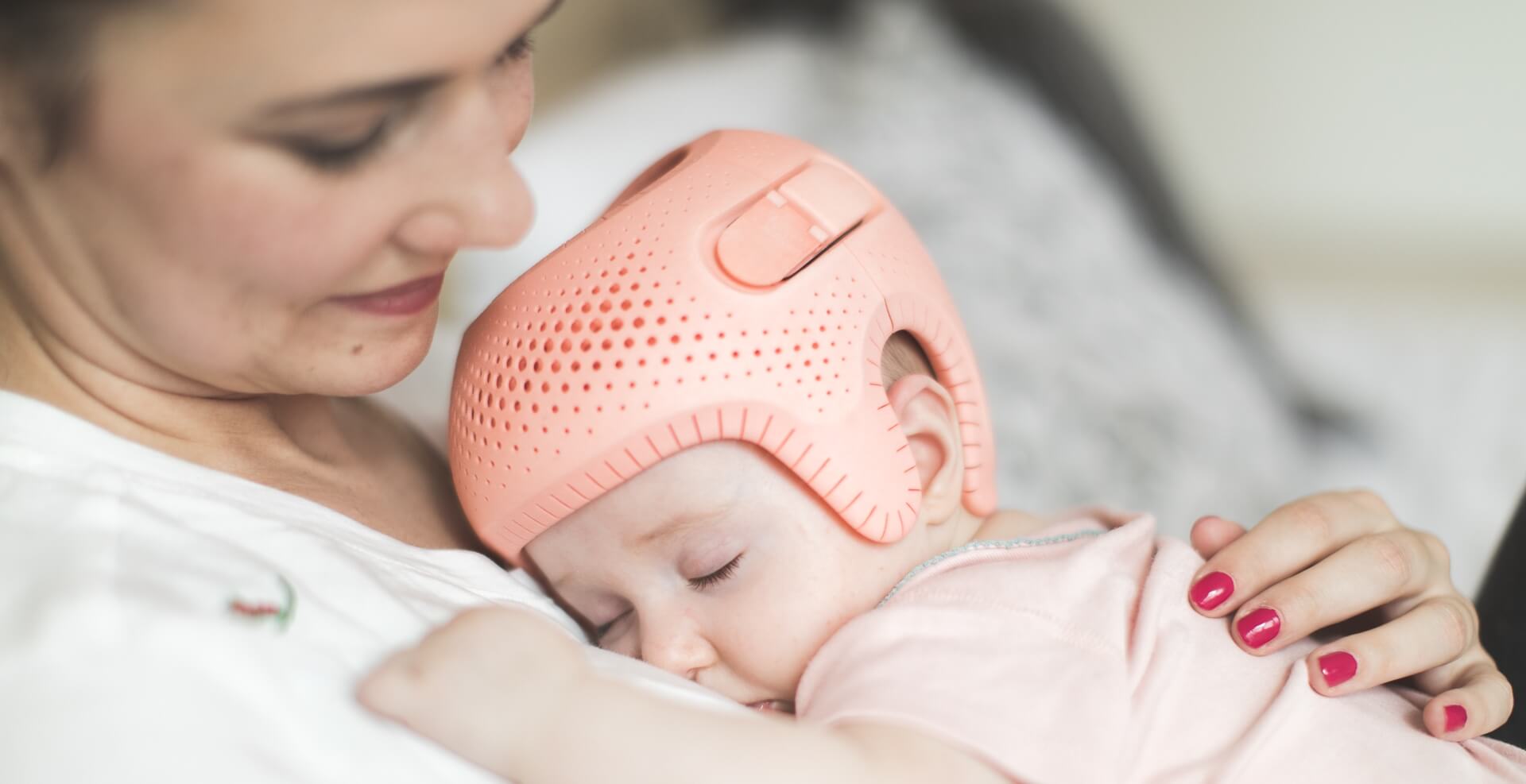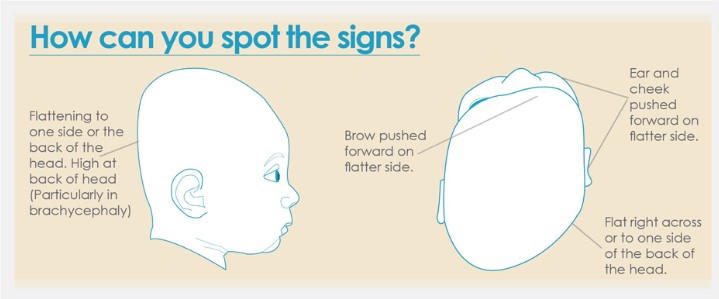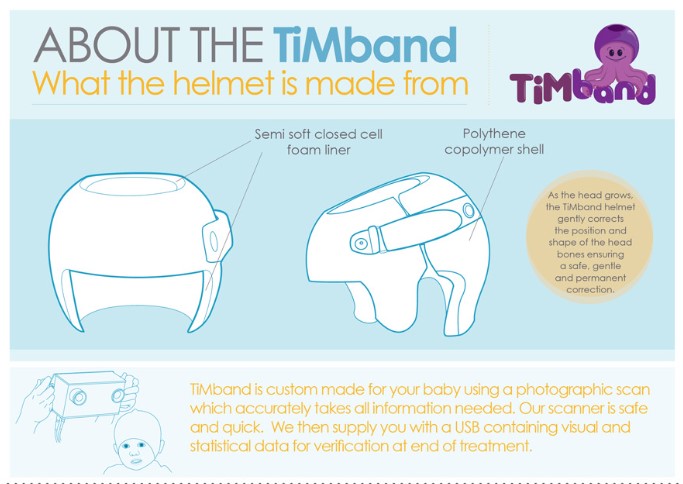
There are many words used to describe a head shape and the word plagiocephaly describes a head shape which is flatter on one side at the back. This shape is often seen in combination with a wide head shape, known as brachycephaly.
What is Plagiocephaly?
The skull is often viewed as two parts, the cranial base on which the brain sits, and the cranial vault which provides the protective covering around and over the brain. A baby’s skull is made up of a number of bone ‘plates’ which are connected by flexible ligaments known as sutures. The role of the sutures is to allow the skull to develop naturally alongside the normal brain growth of the child.
These sutures do retain some flexibility throughout childhood, however, as we get older, the bones fuse together and create a permanent head shape that will not change. In infancy, the sutures retain much more flexibility and are soft and malleable enough to be moulded into deformation from external pressure – causing flatness and abnormal head shapes in the upper part of the skull, the vault in babies. For more information on what is plagiocephaly please visit our website for a more detailed definition.
What Causes Plagiocephaly?
Plagiocephaly develops when the natural growth of a baby’s head meets some sort of pressure which inhibits that growth. This can either be prenatally in the mother’s womb, or because the baby’s head is exposed to a flat surface for an extended period of time. The key causes of plagiocephaly are:
Sleeping on the back: Babies who sleep on their backs for extended periods of time without alternating their position are at increased risk of plagiocephaly. However, since the very successful ‘Back to Sleep’ campaign which is promoted to all new parents, the number of babies who have died has dramatically reduced and we fully recommend all parents to place their baby on the back to sleep.
Muscular torticollis: A congenital condition caused by shortening or tightening of one or more of the neck muscles. This causes the infant’s head to tilt and/or turn to favour one particular direction.
Prematurity: The cranial bones of premature infants are very soft and malleable, especially as the bones typically strengthen in the final ten weeks of pregnancy. After birth, premature babies often spend an extended period of time in neonatal intensive care on their backs to recover.
Pre-birth moulding: A baby could be born with a flattening of the head due to early descent into the birth canal; multiple births causing ‘crowding’ within the uterus; a mother’s small maternal pelvis; the baby being in a prolonged breech position or small quantity of amniotic fluid giving little internal cushioning in the uterus.
Plagiocephaly Symptoms
Noticing the indicators of plagiocephaly as early as you can ensures your baby can benefit from more successful plagiocephaly treatment. Although this list is not exhaustive, the key plagiocephaly symptoms to look out for are:
- Flattening on one side or at the back of the head which causes noticeable asymmetry or a high dome at the back of the head.
- Flattening at the back of the head, the flatness usually occurs higher up on the back of the head (particularly in cases of brachycephaly).
- Uneven position of the ears as the ears and cheeks have been pushed forward on the flatter site of the head.
- The eyes differ in size and position (one eye appears lower/smaller than the other). This can cause the brow to be pushed forward on the flatter side.

Plagiocephaly Treatment: The Next Steps
If you are concerned about your baby’s head shape and need advice, the next step is to contact us for a free pre-assessment to assess the severity of any head shape deformity that your baby may have.
Every plagiocephaly helmet is custom-made for your baby’s individual head shape using a safe photographic scan. Once we have taken the scan and the paperwork is completed, we send this to the manufacturer who quantifies and modifies the head shape using CAD (computer aided design) software.
With over 150 infants using a TiMbandAir at any one time, you can be assured that whatever your baby’s head shape, we have the right knowledge and experience to correct it. We don’t stop head growth, instead the TiMbandAir helmet creates defined limits for the direction of growth, gently and permanently correcting the shape of the head.
Your baby’s TiMbandAir is made of a semi soft closed cell foam liner and lightweight polythene co-polymer shell, which fits comfortably round the head. We have lots of fun and attractive helmet pattern transfers that you can choose from.
At the end of the treatment, we email the initial and final scans with instructions on how to use on the 3D viewer. This software to allow you to see how your baby’s head shape has improved.

If you think your baby may have plagiocephaly, get in touch and book a free pre-assessment with one of our leading clinical orthotists who will be able to advise you on the best form of treatment for your baby. For more information about what you can expect from an initial appointment, read our informative blog post on what happens at a plagiocephaly evaluation.
Technology in Motion has over 10 years’ experience providing helmet treatment for plagiocephaly and can provide you with specialist plagiocephaly advice and support. Call 0330 100 1800 or contact us via the enquiry form to book an appointment at one of our clinics.


